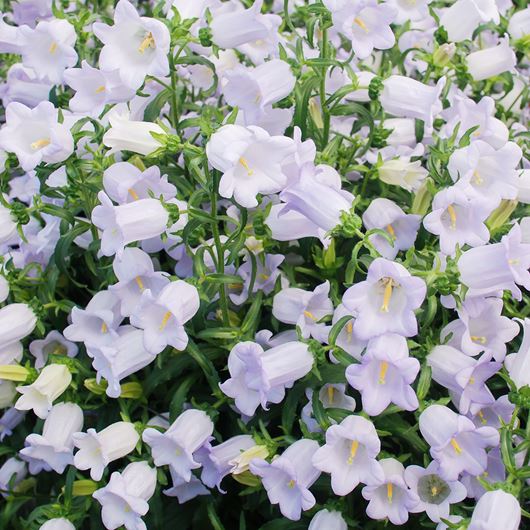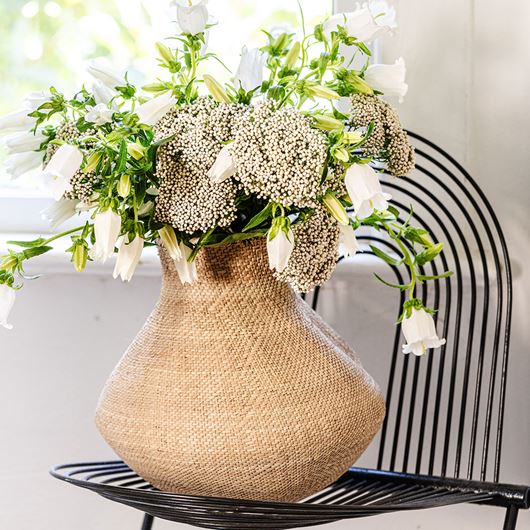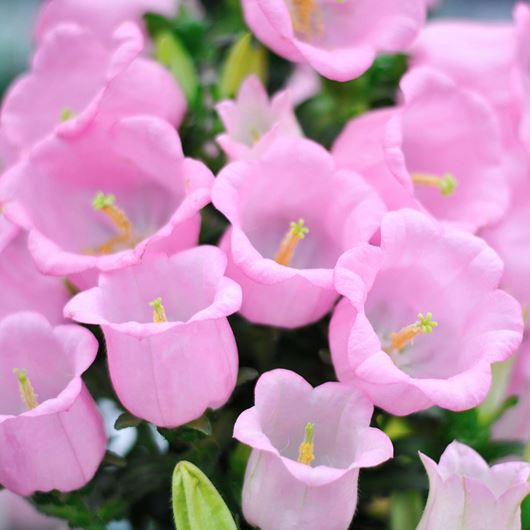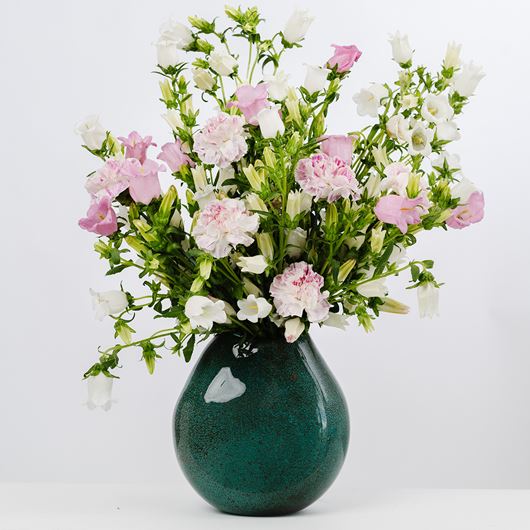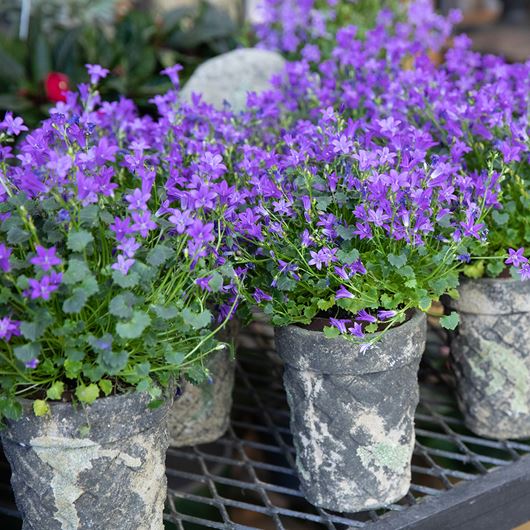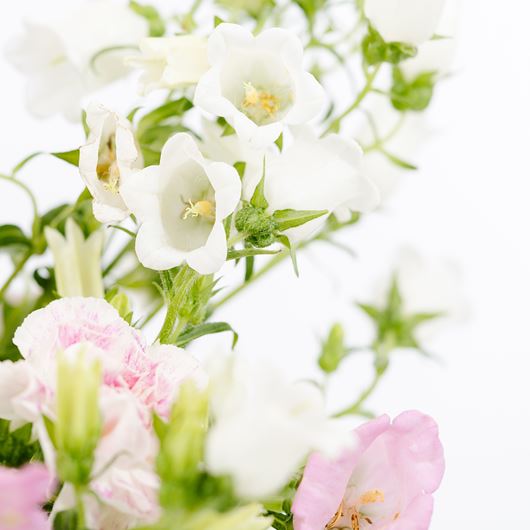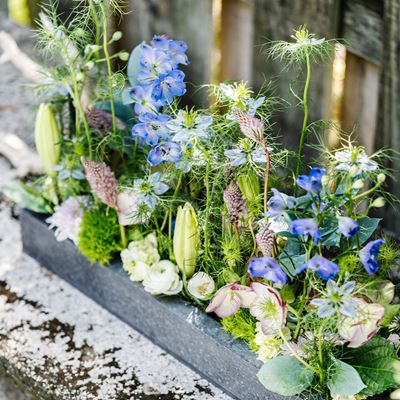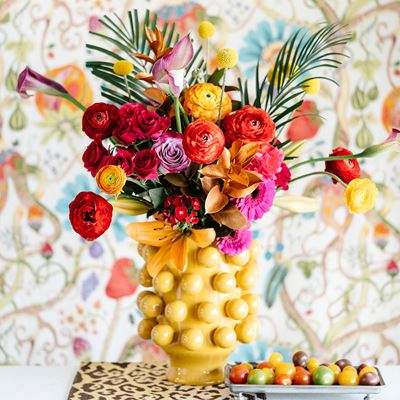Completing our 2023 lookbook series, our sixth and final trend, ATMOSPHERIC, pays homage to our planet's habitats at large. This trending macro view gathers an immersive palette of cool hues, borrowed from the oceans and forests, and pairs it with glowing bright white.
With Fairy-Tale Origins, Campanula's Garden-Style Blooms Capture the Essence of Springtime
For centuries, this exquisite, bell-shaped beauty has stolen the hearts of growers and floral artisans across the world. Native to temperate regions of the Mediterranean, Africa, and Northern and Western Asia, Campanula (also referred to as Canterbury bells) has origins in picturesque country gardens and serene meadows.
A member of the Campanulaceae family, the Campanula genus consists of about 500 species of annual, biennial and perennial plants available in an assortment of sizes and colors. Today, its cultivars are commonly used as cut flowers or garden ornamentals. A number of species have also served as a food source or have been featured in traditional herbal medicine.
The most notable characteristic of Campanula species are their tubular, bell-shaped flowers, hence the common name bellflower (or bell flower). These 2.5–5 cm long flowers—which are generally not fragrant—are loosely clustered at the stems' end and are usually found in blue to purple hues; they may also be available in shades of white and pink.
Campanula stems feature dark green foliage and can grow anywhere from a few inches to a few feet tall. On average, they typically reach 45–60 cm in length. Some species, like Campanula americana (also known as tall bellflower) often produce flowering spikes that can reach 183 cm (six feet) in height!
Popular Campanula cultivars include: Campanula medium 'Champion' series (pink, white or purple flowers); Campanula medium 'Bells of Holland' (pink, purple or white flowers); Campanula medium 'Dwarf Bella Mix' (blue, lilac, pink or white flowers); and Campanula medium 'Double Melton Mix' (double-bloomed flowers in dark pink, light pink or purple shades).
With a rising popularity in whimsical designs, Campanula serves as the perfect accent to add an airy touch to spring and summer arrangements. This garden-style bloom lends visual appeal in more ways than one. The erratic nature of its developing buds spark curiosity, while the height and bend of most stems contribute to the vertical interest sought after in ethereal-inspired compositions. Best of all, only a few stems are necessary to add volume to any design.
FUN FACTS
• The genus name Campanula is derived from the Latin word "campana" meaning bell. This perfectly describes the plant's bell-shaped blossoms, which typically flourish during late spring and summer.
• Florists and home gardeners alike love Campanula not only for its color and unique form, but also because of its low maintenance nature. It's a hardy perennial that can tolerate extreme weather conditions and does not require much floral expertise for its upkeep.
• Especially in Europe, Campanula has been used historically in folk medicine and as a food source. Its leaves are edible and its roots can be consumed raw or cooked. The most popular species cultivated for its edible root is Campanula rapunculus.
• Rapunzel, a childhood favorite character with origins in the Brothers Grimm fairy tale by the same name, was named after Campanula rapunculus. After being stolen by a sorceress as a baby, she was named "Rapunzel" after the delectable plant that Rapunzel's mother had so desperately craved during her pregnancy.
• Fleuroselect, an international organization for the ornamental plants industry, awarded the 'Champion' Series (which are Campanula medium varieties) with a Gold Medal during Fleuroselect's first Cut Flower Trials in 2000.
• Campanula has ties to ancient Greek mythology with stories of Venus, the goddess of love and beauty.
• In floriography, Campanula is typically used to express feelings of gratitude, humility and everlasting love. Also, in some cultures, it is associated with death and therefore used in graveside arrangements and potted displays.
